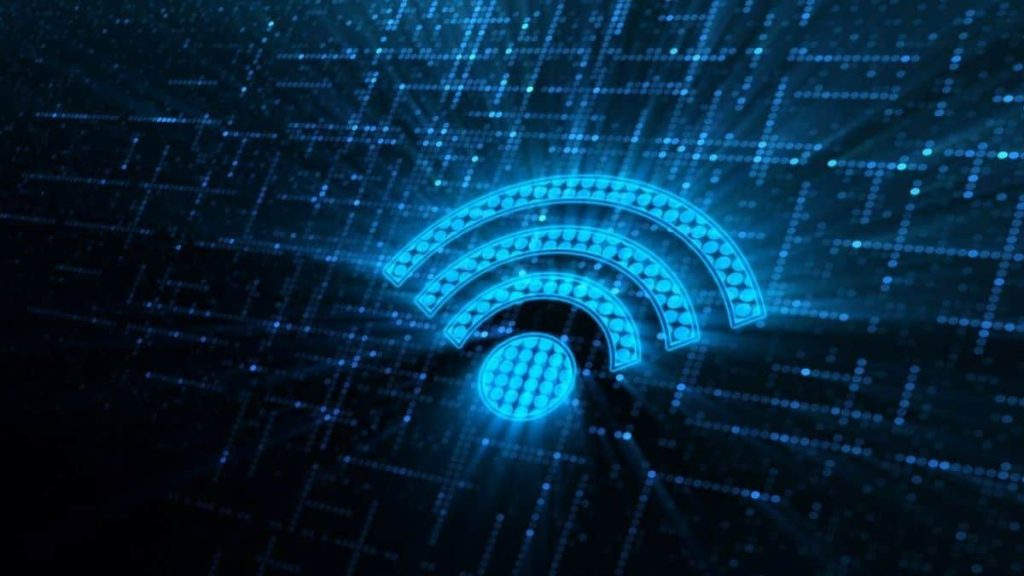Every smart device, from smartphones, and smartwatches to even some home appliances, supports wireless connection or WiFi. However, for the devices to have a reliable connection, the user must have a strong WiFi signal. So, you may now wonder how is WiFi signal strength measured.
If your WiFi signal is strong, your devices will easily connect online, and there will be no issues with your network connection. By having a reliable and strong WiFi signal, you can fully enjoy all the advantages of the internet.
However, if the signal is weak, you will see frequent disconnection in your Network, which can be incredibly annoying to deal with.

How Is WiFi Signal Strength Measured
Usually, the WiFi signal strength is measured in decibel milliwatts (dBm). A decibel milliwatt is a unit of the level used to point out that a power ratio is shown in decibels with reference to one milliwatt. The closer the number of dBm is to zero, the stronger the signal is.
WiFi Signal Strength
The Received Signal Strength Indicator, or RSSI, is the figure you are looking for. Although RSSI is a widely used measurement, most WiFi adaptor suppliers handle it differently because it isn’t defined. Others use a scale of 0-255, while others use a scale of 0-60.
You can also obtain the RSSI on a Mac OS X-powered machine without adding any extra software: While clicking the WiFi symbol in your status menu, hold down the Alt key. Find the name of the Network you are connected to on the list of possible networks, and the connection details, including RSSI, will be shown below.
You should use a heat mapping tool instead of a WiFi scanner if what you are genuinely attempting to achieve is to map the signal strength for an entire house or apartment.
Signal strength for WiFi might be challenging. The most exact way to express it is in milliwatts (mW), but due to WiFi’s low transmit power, you wind up with many decimal places, making it difficult to read. For instance, -40 dBm is equal to 0.0001 mW, and the intensity of the zeros increases as the signal strength decreases.
Read more: How to Boost WiFi Signal
Methods to Measure Your WiFi Signal Strength
Use the following techniques to assess the WiFi signal strength of your Network and look for ways to enhance connected devices’ WiFi reception.
Various tools could produce varying outcomes. These variances are brought on by variations in sample collection methods and reporting deadlines used by the utilities.
Built-in OS software
There is an integrated tool for tracking wireless network connections in Microsoft Windows and other operating systems. The quickest and simplest way to gauge WiFi strength is with this method.
- In order to view the wireless network you are connected to in Windows 10 and later versions, click the network icon on the taskbar. The connection’s signal strength is represented by five bars, with one being the weakest connection and five the strongest.
- Open Control Panel, navigate to Network and Internet, then Network and Sharing Center, and choose the blue WiFi link to view the WiFi strength. And you may identify the network connection in current versions of Windows by doing this.
- The WiFi indicator on a Mac can be found in the menu bar in the top-right corner of the screen. The best connection has three bars, with one being the worst.
Smartphone or tablet
Any mobile device with internet access has a setting that displays the strength of the nearby WiFi networks.
- On an iPhone, for instance, open the Settings app and select “WiFi” to view the signal strength of the Network you’re currently connected to and the signal strength of any nearby networks.
- On an Android phone or tablet, a similar procedure can be applied. Look in the Network, WiFi, or Settings menus.
- On a Google Pixel running Android 10, go to Settings, Network & internet, choose the WiFi you are using, click on the Gear Icon Next to the Network you are connected to, and Select. The signal strength is seen there.
Utility program
Some manufacturers of notebook computers and wireless network devices offer software applications that track wireless signal strength. These programs report signal strength and quality using a percentage ranging from 0% to 100% and extra information suited to the device.
The vendor hardware utility could display the same info in different formats, and the operating system utility could display the same info in different formats. For instance, a connection with a 5-bar rating of outstanding in Windows may display in the manufacturer software as excellent with a percentage rating ranging from 80 to 100%.
WiFi locator device
Lastly, you can use a WiFi locator to measure the signal strength. A WiFi locator gadget searches the local radio spectrum to find neighboring wireless access points and gauges their signal strength. Small hardware devices that hang on a keychain are available as WiFi locators.
Most WiFi locators employ a series of four to six LEDs to display signal strength in bars, much like the Windows application. However, unlike the methods mentioned above, WiFi locator devices forecast the strength of a connection rather than measuring it.
Also read: How Can I Boost My Spectrum WiFi Signal
Conclusion
A strong WiFi signal means a reliable and fast internet connection without delays and buffering. This is why it is important to know how is WiFi signal strength measured. If you know how to do it, you will be able to take care of the issue if you see that the signal is weak.
Or on the other hand, you will be reassured if you see that the signal is strong. As you can see, there are several ways to check your WiFi signal strength, so you have various methods to try out and get an accurate result.